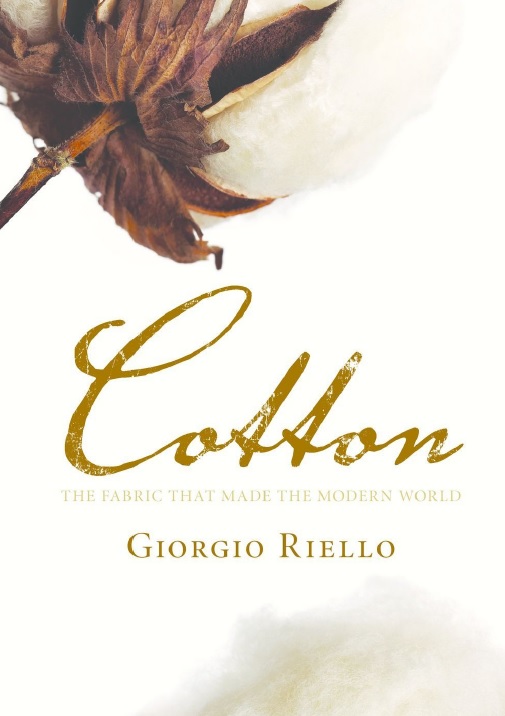Cotton: The Fabric That Made the Modern World

List of maps xxi
List of tables xxii
Preface xxiv
Abbreviations xxviii
1 Introduction: global cotton and global history 1
Part I The first cotton revolution: a centrifugal system,
circa 1000–1500
2 Selling to the world: India and the old cotton system 17
3 ‘Wool growing on wild trees’: the global reach of cotton 37
4 The world’s best: cotton manufacturing and the advantage of
India 59
Part II Learning and connecting: making cottons global,
circa 1500–1750
5 The Indian apprenticeship: Europeans trading in Indian cottons 87
6 New consuming habits: how cottons entered European houses
and wardrobes 110
7 From Asia to America: cottons in the Atlantic world 135
8 Learning and substituting: printing cotton textiles in Europe 160
Part III The second cotton revolution: a centripetal system,
circa 1750–2000
9 Cotton, slavery and plantations in the New World 187
10 Competing with India: cotton and European industrialisation 211
11 ‘The wolf in sheep’s clothing’: the potential of cotton 238
12 Global outcomes: the West and the new cotton system 264
13 Conclusion: from system to system; from divergence to
convergence 288
Notes 296
Select bibliography 371
Index 395
Preface:
Today the world textile and garment trade amounts to a staggering 425 billion US dollars in value. We are told that under the pressure of increasing globalisation, it is Asia – India and China in particular – that is the new worldmanufacturing powerhouse. However the recent growth of Asia into the world’s leading textile manufacturer is not a new phenomenon. Until the industrial revolution at the end of the eighteenth century, both India and China were leading economic areas and their skills in cotton textile manufacturing were superior to those of Europe. Asia manufactured great quantities of colourful printed and painted cottons that were sold across the Indian Ocean and reached faraway places such as Japan and Europe where they were craved as exotic fashionable goods.
Historians have argued that this ensured for Asia – and in particular India – widespread prosperity, as well as high rates of economic growth and technological development, but that sometime after 1750 Europe experienced a sudden and radical economic transformation: the continent industrialised. Mechanisation was first experienced in the textile sector. The spinning machine allowed one late eighteenth-century European woman to produce as much yarn as three hundred women in India. By the early decades of the nineteenth century, India, China and the Ottoman Empire switched from being world producers to being buyers of European cotton textiles, a position that they retained for the following two centuries.
This book is the first global analysis of cotton textiles. It argues that Europe’s engagement with cotton textiles changed the shape of the world we still live in. It brings together the history of European industrialisation and the global significance of cotton textiles. Key to this book is the explanation of when, how and why Europe replaced Asia as the main area of production and trade of cotton textiles and the profound effects that this generated. Cotton was central to the creation of a ‘new global system’ increasingly presided over by Europe, not Asia. But technological development was just one among the many factors explaining this transition. The importance of raw materials, markets for products and consumers’ preferences, and the increasing power of European nations over vast areas of the globe are in this book seen as critical in explaining the divergent paths of Europe and Asia.
This book was researched and written over a period of several years. Its original idea and formulation emerged from the activities of the Leverhulmefunded Global Economic History Network (GEHN) based at the London School of Economics and coordinated by Patrick O’Brien between 2003 and 2007. The network constituted the first truly collaborative platform for research and discussion in the field of global economic history. Over the years, I learned a great deal about global history and about the challenges posed by this relatively new field of historical enquiry. I also learned from Patrick what historians should aim for, a lesson that is more important than any other. Several members of GEHN provided much needed support. I would like to thank in particular Kent Deng, Kenneth Pomeranz, Om Prakash, Kaoru Sugihara and Peer Vries. I have also a considerable debt to the late Larry Epstein.
My move to the University of Warwick in 2007 and the foundation of the Global History and Culture Centre was a second and no less important stage in the shaping of this book. It allowed me to engage with a new agenda in cultural and social history that has greatly enriched my analysis. I also found the best colleagues that one can hope for, in particular Maxine Berg, Anne Gerritsen and Luca Mol` a. The four of us developed courses and organised sometimes logistically complicated events and trips that entailed cooking dyes in a famous London museum, broken arms, and getting lost in Beijing. The Warwick Global History and Culture Centre has provided the perfect setting for completing the research included in this book.
Adventure and friendship mix together. Beverly Lemire, Peter McNeil and John Styles were great companions in several trips to archives, museums and artisans’ workshops in Europe, North America and Asia. We risked our lives on at least a couple of motorways and got lost in dodgy neighbourhoods, all in the name of research. Tirthankar Roy and Prasannan Parthasarathi rescued me from the maze of editing books. My collaboration with both of them has been essential for the writing of this book as has been the intellectual input of over thirty contributors to these edited projects. I would like to thank in particular Prasannan for checking on me every week during the writing of this book, making sure that it was completed.
